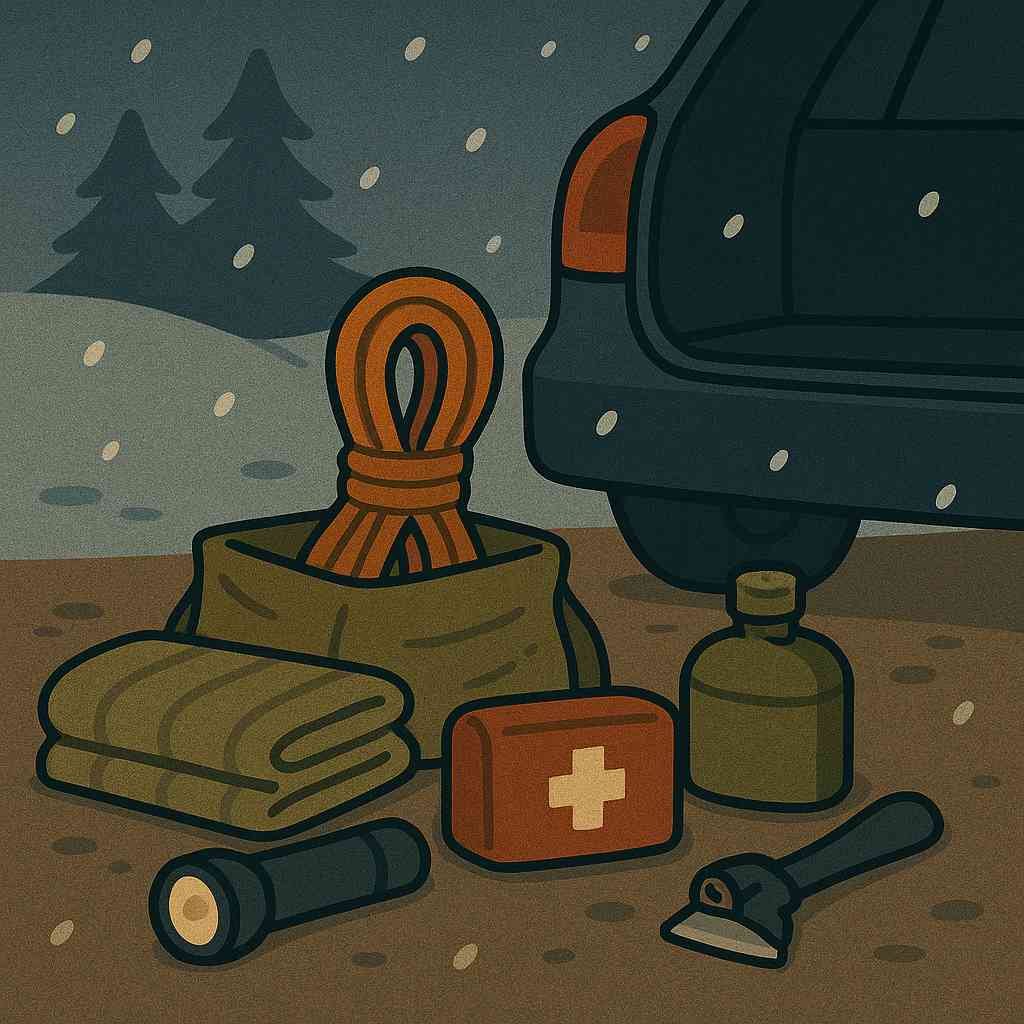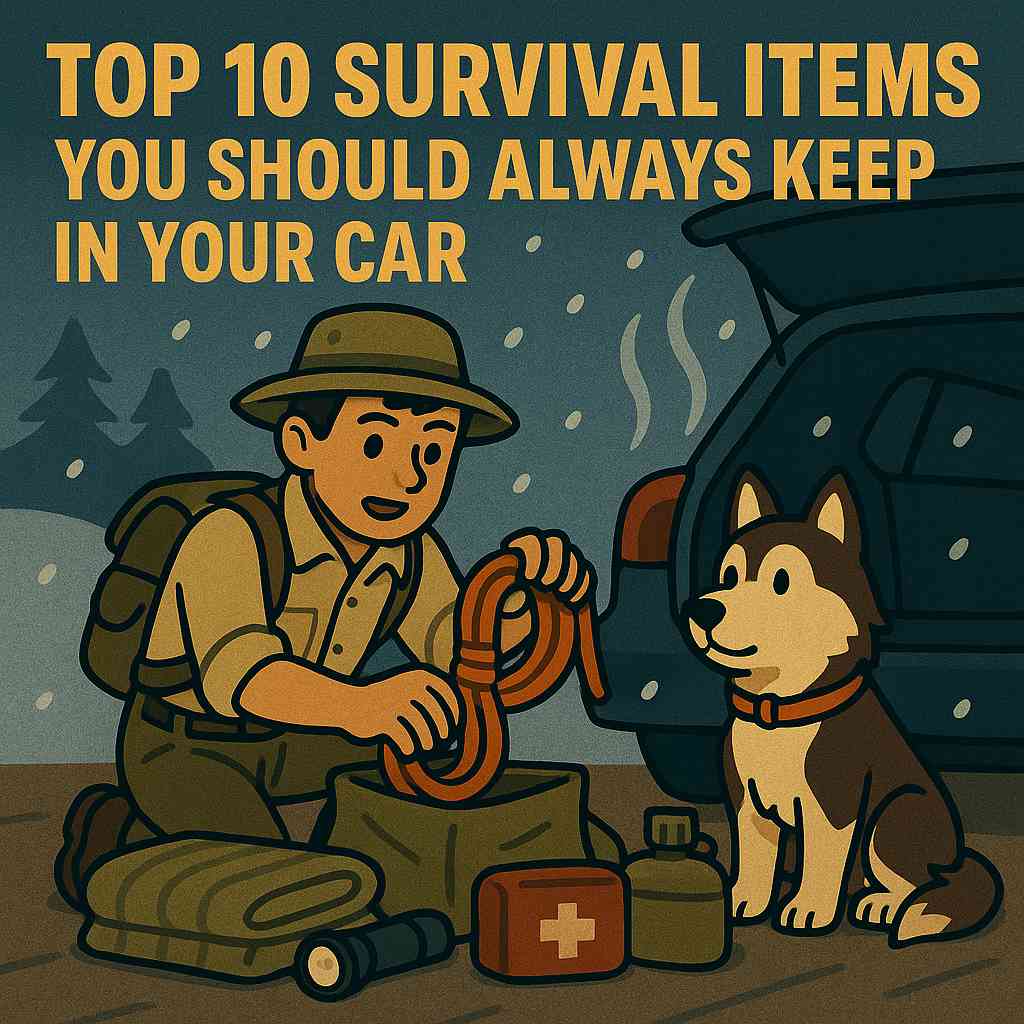✅ 1. First Aid Kit
Injuries can happen during accidents, evacuations, or even while changing a tire. A compact first aid kit should include bandages, antiseptics, pain relievers, and gloves. Add trauma scissors, a CPR mask, and any personal medications. It’s the single most important item you hope you’ll never need—but always should carry.
✅ 2. Flashlight and Extra Batteries
When your car battery dies at night, a flashlight can be your only source of visibility. Choose an LED flashlight with strong brightness and long runtime. Consider models with a hand crank or solar charging option. Store it somewhere accessible from the driver’s seat.
✅ 3. Thermal Blankets or Sleeping Bag
If you get stuck in snow or stranded overnight, warmth becomes essential. Mylar space blankets are compact and reflect body heat. For extra comfort, add a cold-rated sleeping bag—especially during winter. Hypothermia can begin in just a few hours inside a cold vehicle.
✅ 4. Emergency Food and Water
Non-perishable snacks like protein bars, trail mix, or MREs are great for energy. Store at least one gallon of water, rotating it every 6 months. A compact water filter or purification tablets are great backups in case you’re stuck longer than expected.
✅ 5. Phone Charger and Power Bank
Without power, your phone becomes useless fast. Always keep a fully charged power bank in your kit, ideally solar-powered or with a hand crank. It can be a lifeline to call for help—or access maps and survival apps when offline.
✅ 6. Multi-Tool or Compact Toolkit
A good multi-tool combines screwdrivers, pliers, a knife, and more in one. Add a basic toolkit with jumper cables, duct tape, and a tire pressure gauge. These can get you moving again—or help someone else in need.

✅ 7. Reflective Triangles and Road Flares
If your vehicle breaks down on a dark road, you must be visible. Reflective warning triangles and LED flares prevent accidents and help emergency responders spot you. Store them in your trunk with easy access.
✅ 8. Ice Scraper and Small Shovel
In winter, ice and snow can trap your car. A compact ice scraper helps with visibility, while a small shovel can dig you out. Choose foldable or telescoping models to save space.
✅ 9. Extra Clothing and Gloves
Keep a set of dry clothes, a hat, and gloves in a sealed bag. If you’re soaked in rain or snow, changing quickly prevents heat loss and chills. Insulated gloves also help with vehicle repairs in freezing weather.
✅ 10. Paper Map and Notepad
GPS can fail. Always keep a regional road map in your glovebox. A notepad and pen can help leave messages or track your situation over time. In an emergency, old-school tools still matter.
✅ Conclusion
Every time you get behind the wheel, you take on some risk. But being prepared means you won’t be helpless. With a well-stocked car survival kit, your vehicle becomes more than just transport—it becomes your safe zone. Don’t wait for disaster. Build your kit today and drive with confidence tomorrow.
✅ FAQ
Q1. How often should I check my car survival kit?
A1. Review and refresh it every 6 months. Replace expired food, water, and battery-powered items.
Q2. Can I use my car’s heater during a breakdown?
A2. Only in short bursts. Run the engine periodically to preserve fuel, and crack a window slightly for ventilation.
Q3. What’s the most overlooked item in car survival kits?
A3. A paper map. Most people forget GPS can fail or run out of battery. It’s a simple, low-tech backup that can save you.
Other guides to help you prepare:

